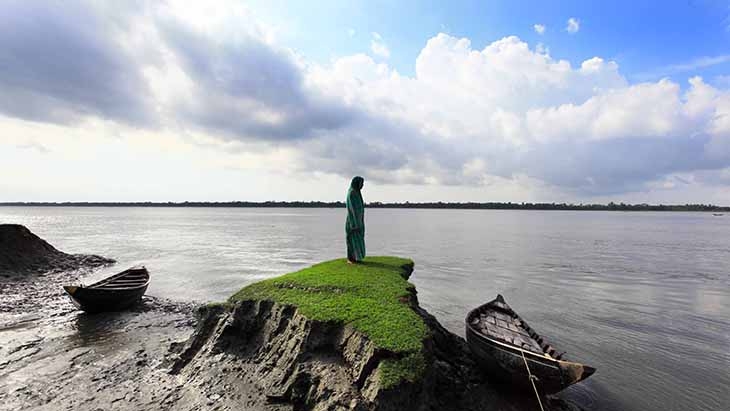Fatema Begum heard the warning to evacuate as Cyclone Sidr bore down on Bangladesh’s southwestern coast in 2007. But she didn’t leave until her home began to fill with water. The nearest shelter was only five meters away, but in the darkness and surging water, that short distance felt like five kilometers. She struggled with two young children in tow, eventually arriving soaked and lucky to be alive.
Begum recently described her ordeal to researchers trying to find out how to improve women’s odds in one of the most disaster-prone countries on earth – and where women have died in far greater numbers than men.
Her story and several others are captured in a new documentary and survey for the World Bank and its fund for the poorest countries, the International Development Association (IDA). The survey inventories cyclone shelters and provides fresh data on the state of emergency preparedness in some of the most vulnerable regions of Bangladesh.
One of its chief aims is to gather evidence on how gender factors into disaster risk and response.
“Bangladesh has made a huge investment in disaster risk management, and it’s saving lives,” says Sabah Moyeen, the World Bank social development specialist leading the effort. “But weaving gender into all aspects of disaster planning and recovery could save more lives.”
In 1970, before early warning systems and storm tracking by satellite, the huge Bhola Cyclone claimed an estimated 300,000 victims in Bangladesh. One of the most striking things about the storm was that women victims outnumbered men 14 to 1.
Cyclone Sidr some 37 years later was as powerful, but casualties fell to about 3,500. The ratio of female to male deaths dropped to 5 to 1.
Between the two storms, Bangladesh had become a model in disaster preparedness. Some 3,500 cyclone shelters were built with the help of partners, including IDA, and more are on the way through the Cyclone Emergency Restoration Project, supported by IDA, and other initiatives. The government joined forces with the Red Crescent Society to develop the cyclone preparedness program and an early warning system.
One of the most effective strategies was involving women, say disaster risk experts. Most women were home-based, responsible for children and elders, and culturally and socially isolated. They died in cyclones because they did not hear warnings, or because they had to fend for others as well as themselves. Many would not evacuate without their husband or another male to accompany them.
Bangladesh tapped women as preparedness champions and made separate spaces in shelters for women and children. Women more readily left their homes after hearing other women calling for people to evacuate. But barriers remain. In recent surveys, women perceived shelters as insecure places where they would have to sacrifice their privacy, and husbands saw them as places they did not want to bring their wives.
Begum said her local shelter lacked drinking water and toilets – two things she considered essential. There was no light to guide her on her short journey. Once at the shelter, she had to stand with her children in a crowded room with men.


